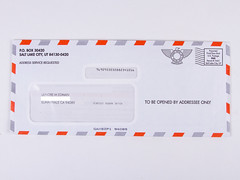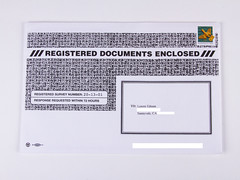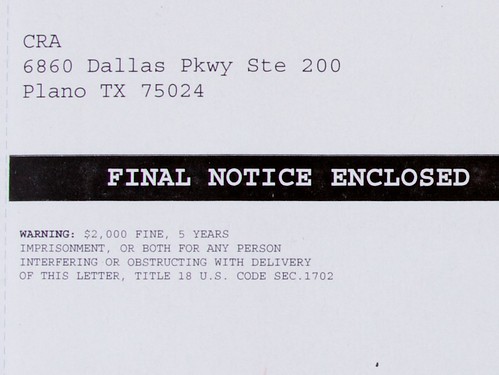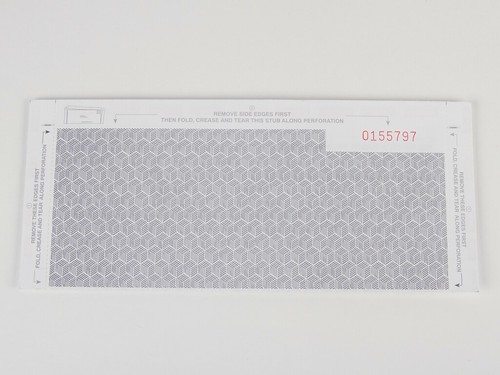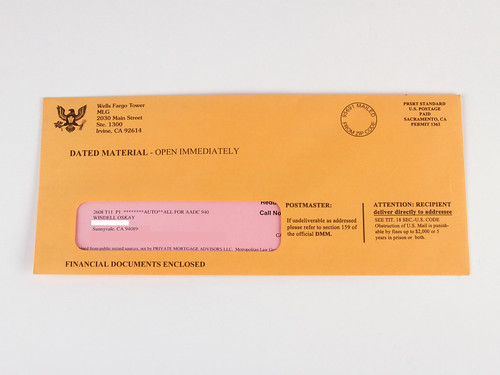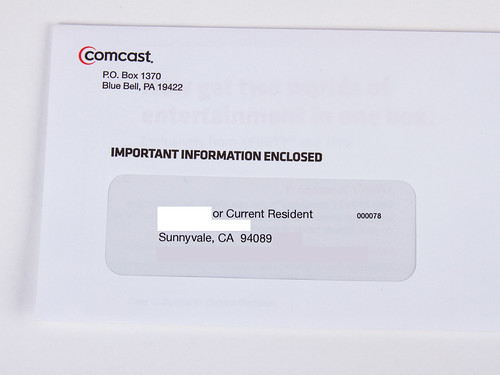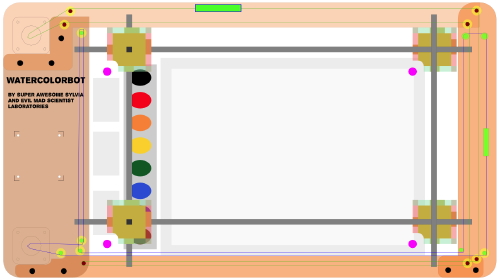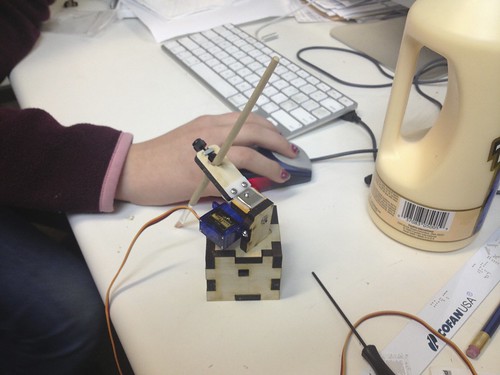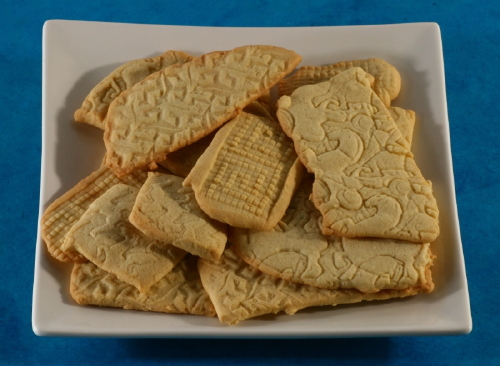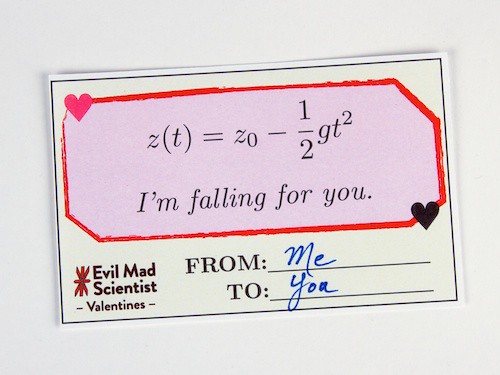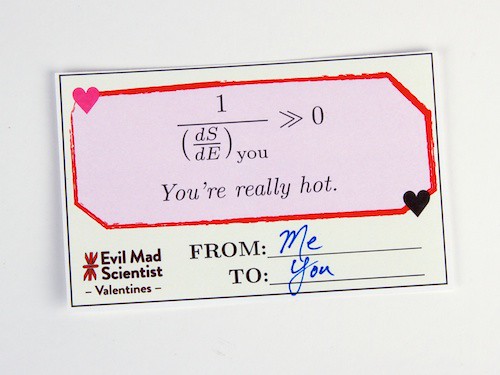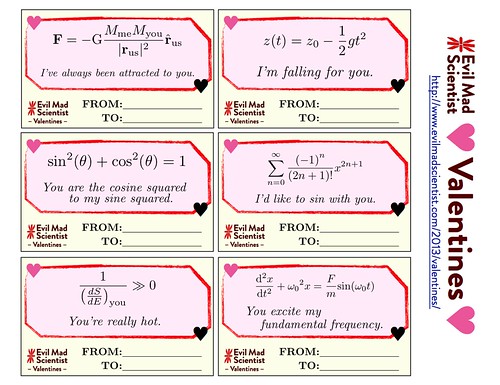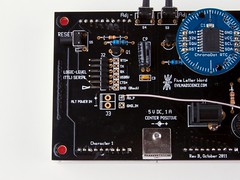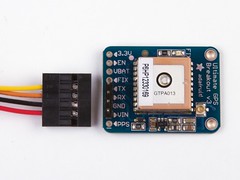A conspicuous contemporary trend in “traditional” dead-tree junk mail (the snail-mail equivalent of online spam) is to follow the basic format of phishing e-mail: it comes in disguise as legitimate “important” mail, to trick you into clicking on opening it.
And so for a while now, we’ve been amassing a collection of what we call “Envelopes That Claim to be Important.” Here are a few prime examples of what to watch out for.
Often times, these envelopes are quite well done. Above is an example that might cause a genuine double take— with its “FINAL NOTICE ENCLOSED” — and bank-PIN style tear tabs on the sides.
And then, there’s the fine print, so that you really take it seriously. A $2,000 fine or 5 years imprisonment(!) are threatened under §1702 should you fail to deliver this fine specimen of junk mail letter to its intended victim. (This penalty is true but somewhat misleading; the law refers to obstruction of mail in general, not this “final notice” in particular.)
To complete the illusion, envelopes like this often come complete with security printing on the back side. Is this really for privacy, or just so that you can’t quite as easily make out the advertisement lurking within? (Also, our bet is that everyone gets the exact same red-printed number on the back side.)
Another sleazy trick is to make the envelope look like the work of some (generally implied but unspecified) government agency. Official looking seals, IRS style typography, or an implied return address in the state capital aim to create the impression that this is a critical document, to be stored with your important papers. Sprinkle on a few §1702 threats here and there to complete the picture.

This time, it’s personal. And confidential. And, what exactly is a “secured document,” anyway?

“Registered Documents” is probably meant to be evocative of Registered Mail (which tends to actually be important), but comes off more like the previous “secured document” instead. Again with the security printing, too!
And nothing shouts “Important Information” more clearly than the words “… or Current Resident.”
We have not yet noticed any envelopes with both the §1702 threat and the address of “Current Resident,” but it stands to reason that they’re out there.

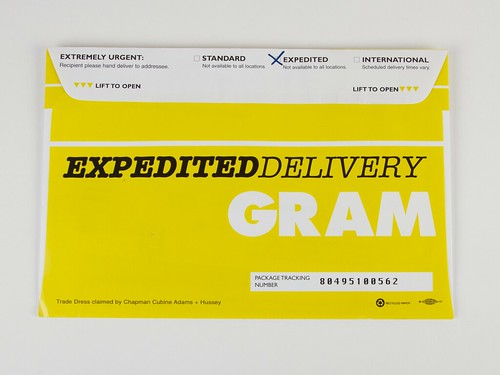
And finally, here is a truly over-the-top example of (yes) presorted first class mail. In their defense, printing technology has come a long long way, and all those printed permanent marker marks look pretty darned real.




